Complex for measurement of climatic parameters of the atmosphere
The structure of modern hardware system that allows to measure the climatic parameters of the atmosphere include:
1. LIDAR, mod. CHM15k Nimbus
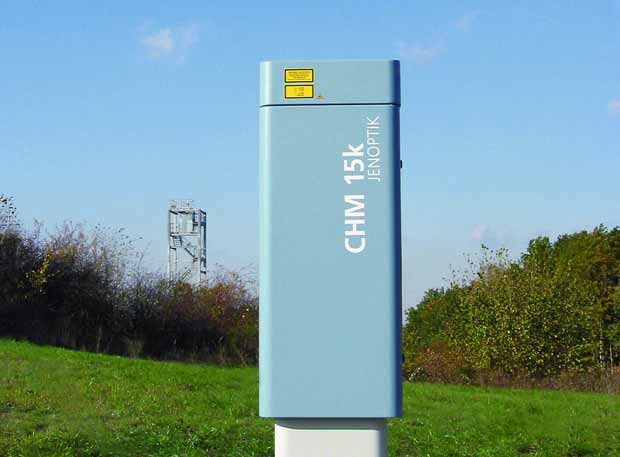
Lidar CHM-15k, has a high spatial resolution (5 m) with operation range up to 15 km. His work is based on the phenomenon of backscattering of laser radiation in the atmospheric aerosol. LIDAR used to study clouds, fogs, atmospheric aerosol parameters, studying the properties of cirrus clouds, determining the height of the boundary layer, vertical visibility, to obtain reliable data on the spatial and temporal changes of atmospheric components.
Opto-electronic receiver uses lidar method for recording data, LIDAR is an optical version of radar.
CHM 15k is ready to operate continuously and in any weather. Its rugged weatherproof enclosure to IP65 standards for internal protection. Using specially designed optics and automatic temperature control system CHM 15k is resistant to condensation and frost formation.
Specifications
Measurement parameters:
- pitch range – 5 m-15 km;
- vertical resolution – 5 m;
- measurement time – 10 min 2 sec-standardly 15 s, 20 s or 60 s;
- target – aerosol and clouds;
- measured parameters – back scattered laser pulse, height of cloud base up to 6 layers;
- measurement principle – lidar.
Laser optics options:
- source – laser protection class 1M according to EN 60825-1;
- wavelength – 1 064 nm;
- bandwidth – 0.1 nm;
- pulse duration – 1 ... 5 ns;
- pulse repetition rate – 5-7 KHz;
- the beam diameter (1 / e²) – expandable up to 90 mm;
- laser divergence – <0.3 mrad;
- pulse energy – 8 mkJ.
Electronics options:
- rated voltage – 230 VAC, ± 10%;
- frequency – 50 Hz;
- the maximum power consumption – 0.8 kV.
Terms of use:
- operating temperature range – from -40°C to +50°C;
- relative humidity – from 0% to 100%.
Weight and dimensions: 70 kg, 50*50*155 cm
2. The microwave radiometer RPG-HATPRO
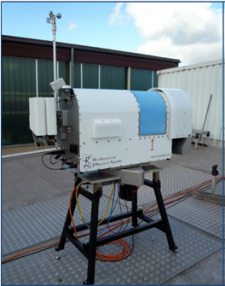
Automatic multi-channel microwave radiometer RPG-HATPRO for continuous measurement and recording of data of temperature profiles of the atmosphere, profiling the relative and absolute humidity. Also the unit can recover the integral water vapor content and the water content of clouds, including the snow clouds. In addition, equipped with its own weather station and GPS sensor. Radiometer is able to carry out measurements at altitudes up to 10 kilometers. The reliability of radiometer does not depend on the weather and climatic conditions. Temperature range of use of the device from - 40°C to 45°C.
This device is equipped with a lightning protection system. In the event of an outage, all data is completely restored, and the device is self-calibrated.
Applications
- Determining the temperature profile of the liquid water and humidity in the troposphere.
- boundary layer temperature profiles with high resolution, greater than that of the ball-pilot.
- Input data for weather and climate models (data assimilation).
- short-range atmospheric stability: extreme weather conditions.
- Detection of temperature inversion, fog, air pollution.
- Absolute calibration clouds radar.
- Adjustment of wet and dry delays in the application very long baseline interferometry.
- Monitoring of water vapor for astronomical objects.
Specifications
|
Humidity Profile Feature (The zenith and the direction of motion) |
|
|
Characteristics of the temperature profile (The zenith and the direction of motion) |
|
|
Characteristic profile of liquid water (Only with the option of infrared radiometer) |
|
|
Optional infrared radiometer |
|
|
The trajectory of liquid water |
|
|
The content of water vapor |
|
|
Full maps of the sky with the content of water vapor and liquid water path (only with the option of positioning the azimuth) |
|
|
Satellite tracking mode (only with the option of positioning the azimuth) |
|
|
Channel center frequency |
|
|
Channel bandwidth |
|
|
System noise temperature |
|
|
Radiometric resolution |
|
|
The accuracy of temperature measurement with absolute brightness |
|
|
Radiometric range |
|
|
Absolute calibration |
|
|
Internal calibration |
|
|
Thermal stabilization of the receiver and antenna |
|
|
Error correction of non-linearity gain |
|
|
Calculation of brightness |
|
|
Integration time |
|
|
The frequency of sampling profiles |
|
|
The system of rain / mist suppression |
|
|
Environmental sensors |
|
|
Data interface |
|
|
The data rate |
|
|
The control device (external PC) |
|
|
The control unit (internal) |
|
|
Official data |
|
|
Search Algorithms |
|
|
Optical resolution |
|
|
Side lobe amplitude |
|
|
Orientation speed (lifting) |
|
|
The speed of orientation (azimuth) further |
|
|
Operating Temperature Range |
|
|
Power consumption |
|
|
Lightning protection |
|
|
Input voltage |
|
|
Weight |
|
|
Dimensions |
|
3. Sun automatic photometer CIMEL
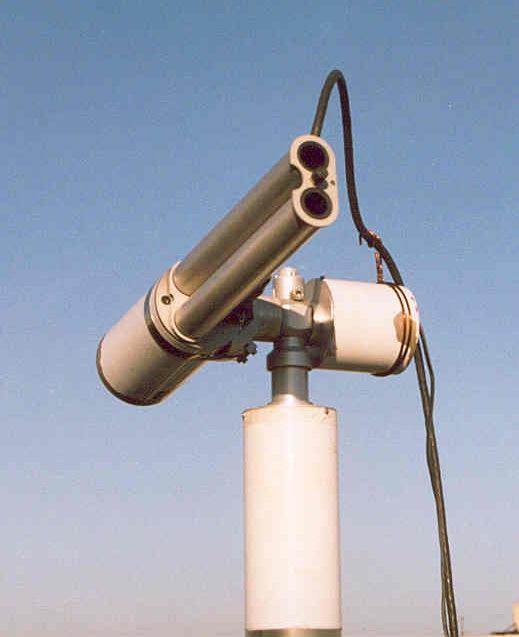
Sun photometer Cimel CE-318 measures the direct solar radiation at 8 wavelengths in the visible spectrum, brightness of the sky in almucantar in the main plane. 940 nm channel is used to determine the content of water vapor in the atmosphere in the form of precipitated water.
The optical thickness is calculated based on the spectral attenuation of the beam at each wavelength using the Bouguer law. Rayleigh scattering, absorption by ozone and polluting gases discarded, leaving only the aerosol optical thickness (AOT).
Data output
Automatically 1 time per day is discharged from the buffer to the computer's own microcontroller.
Data processing
Data on the accumulation of transferred over the network to a processing center in Goddard (GSFCNASA), where they are using the same methodology are calibrated and processed, then put up on the site AERONET network (http://aeronet.gsfc.nasa.gov).
- Wavelengths: 340, 380, 440, 500, 670, 870, 940 and 1020 nm.
- Spectral half-width: 10 nm.
- Angle receive solar collimator: 1.2°.
- Detector: silicon photodetector.
- Scanning method: scanning elevation and azimuth.
- Scan Accuracy: 0.1°.
- Power supply: external battery and solar panel.
Application area
Monitoring of atmospheric aerosol (total optical thickness, the concentration of water vapor). Study microphysical aerosol characteristics (single-scattering albedo, particle size distribution, the dynamics of growth and disappearance of particles). When using the data network of stations is possible to estimate the dynamics of the global aerosol pollution.
4. The analyzer of greenhouse gases
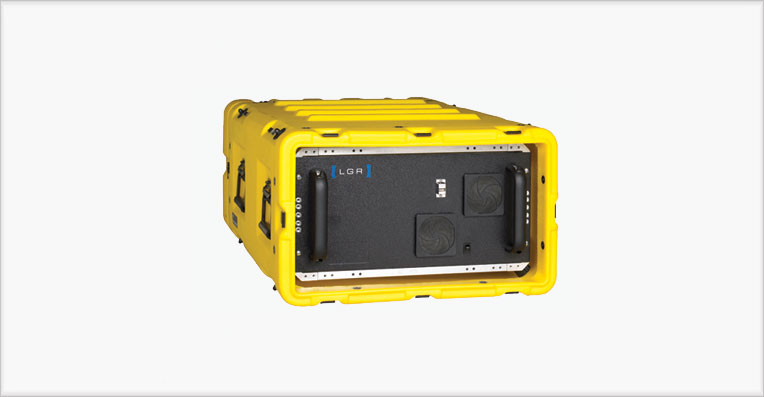
Greenhouse Gas analyzer Company Los Gatos Research (model GGA-24EP) - an automatic device for the simultaneous measurement of methane (CH4), carbon dioxide (CO2) and water vapor (H2O).
The principle of operation of the gas analyzer is based on the off-axis integrated intracavity laser spectroscopy (Off-axis ICOS). Concentrations are calculated by determining the integrated absorption lines in CH4, CO2 and H2O.
The new series with "Enhanced Performance" LGR improved performance with the company's internal temperature control system provides good accuracy, linearity, reliability and drift.
Application area
The high speed and a wide range of measured concentrations do analyzer tool for the monitoring of greenhouse gases in the atmosphere, and the complex ultrasonic animometrom the analyzer allows for assessment of greenhouse gas flows from the earth's surface.
The device is suitable for a wide range of field research, research and air quality detection of the methane leakage (e.g., transportation and distribution of natural gas, coal mines).
Reliability
The total error of <0.25% of reading (without calibration, the model series of EP).
Maximum drift
15 minute averaging at STP (standard pressure and temperature) for 24 hours.
- CH4: 0.8 ppb.
- CO2: 120 ppb.
- H2O: 100 ppm or 1% of reading, depending on what the reading greater.
Measurement range
- CH4: 0.1-25 ppm.
- CO2: 200-4000 ppm.
- H2O: 7000-70000 ppm.
Operating range
- CH4: 0-1 000 ppm.
- CO2: 0-20 000 ppm.
- H2O: 0-70 000 ppm.
Accuracy (1σ, 5 sec. / 100 sec.)
- CH4: 1 ppb / 0.3 ppb.
- CO2: 150 ppb / 50 ppb.
- H2O: 100 ppm / 30 ppm.
Response time
while the flow through the measuring cell:
- <0.1 sec. (requires an external pump to answer B10 Hz),
- 10 sec. (standard vacuum pump).
Operating requirements
- Ambient humidity – <98% RH non-condensing.
- Operating temperature – 0-45°C.
5. CO analyzer

CO analyzer companies Los Gatos Research (Model CO-23r) provides continuous measurement of carbon monoxide levels in the environment in real time.
The principle of operation of this device is based on the off-axis integrated intracavity laser spectroscopy (Off-axis ICOS).
In addition to determining the concentration of carbon monoxide analyzer examines the absorption band of water vapor, which allows to obtain the values of CO concentrations for dry air.
Application area
The device is designed for a variety of tasks such as monitoring of carbon monoxide in the air, measuring the eddy covariance flux measured cameral flows and diagnostics of fuel combustion process. The analyzer is also suitable for field measurements.
Reliability
The total error of <1% of reading.
Maximum drift
15 minute averaging at STP (standard pressure and temperature) for 24 hours.
- CO: 0.1 ppb.
- H2O: 50 ppm, or 1% of reading, depending on what the reading greater.
Measurement range
(Meets all specifications)
- CO: 5-4 000 ppb.
Operating range
- CO: 0-10 ppm.
Accuracy (1σ, 1 s / 3 min)
- CO: 0.15 ppb / 0.050 ppb.
- H2O: 50 ppm / 10 ppm.
Response time
while the flow through the measuring cell:
- <0.1 sec. (requires an external pump);
- 10 sec. (standard vacuum pump).
Operating requirements
- Ambient humidity – <98% RH non-condensing.
- Operating temperature – 0-45°C.
6. The ozone analyzer
Gas Analyzer Model 49i Thermo Scientific™ is a photometer with two measuring cells. The sample is divided into two streams, the first stream passes through the ozone scrubber (reference current) flows through the valve and into one cell, the second stream is supplied directly into the second cell. After 10 seconds, the switching valves are reversed cell.
The device uses a UV photometric technique (UV lamp at a wavelength of 254 nm) for measuring the amount of ozone in the air within the units of ppb to 200 ppm.
Application area
The analyzer is designed for continuous monitoring of ozone in the atmosphere, with further assessment of air quality.
Features
- Ability to set the built-in ozonator.
- Remote access over an Ethernet LAN.
- The user interface with programming buttons and a large display.
Measuring range O3: 0-200 ppm / 0-400 mg/m3 ± 20%.
Random error: 0.25 ppb (at 60-sekundnos averaging).
Response time: 20 sec. (10-second delay).
Sample flow rate: 1.3 l/min.
Operating requirements
- The relative ambient humidity – 30-90%.
- Working temperature – 20-30°C.
7. NOx analyzer

Thermo Scientific™ analyzer nitrogen oxides (model 42i) – an automatic analyzer that measures the content of oxide and nitrogen dioxide, which is based on the use of chemiluminescent light technology, which is recorded by the chemical reaction of nitric oxide with ozone. To determine the concentration of nitrogen dioxide in the sample preparation unit occurs prior NO2 to NO conversion in the presence of a molybdenum catalyst.
The output information may be presented in the independent mode for each of the gases: NO, NO2 and NOx.
Application area
Analyzer for continuous measurement of oxide and nitrogen dioxide in the air, flue gases in the process gas environments. Gas analyzers are used at the enterprises of oil refining, gas processing and other industries, for environmental monitoring.
Features
- Ability to set the built-in ozonator.
- Remote access over an Ethernet LAN.
- The user interface with programming buttons and a large display.
Measuring range: 0-200 ppb; 0-500 mg/m3 ± 20%.
Random error: 0.25 ppb (at 120-second averaging).
Response time:
- 60 sec. (10 second averaging);
- 90 sec. (60-second averaging);
- 300 sec. (with 300-second averaging).
Sample flow rate: 1 l/min.
Operating requirements
- The relative ambient humidity – 30-90%.
- Working temperature – 15-35°C.
8. Infrared Fourier spectrometer Bruker IFS 125 HR
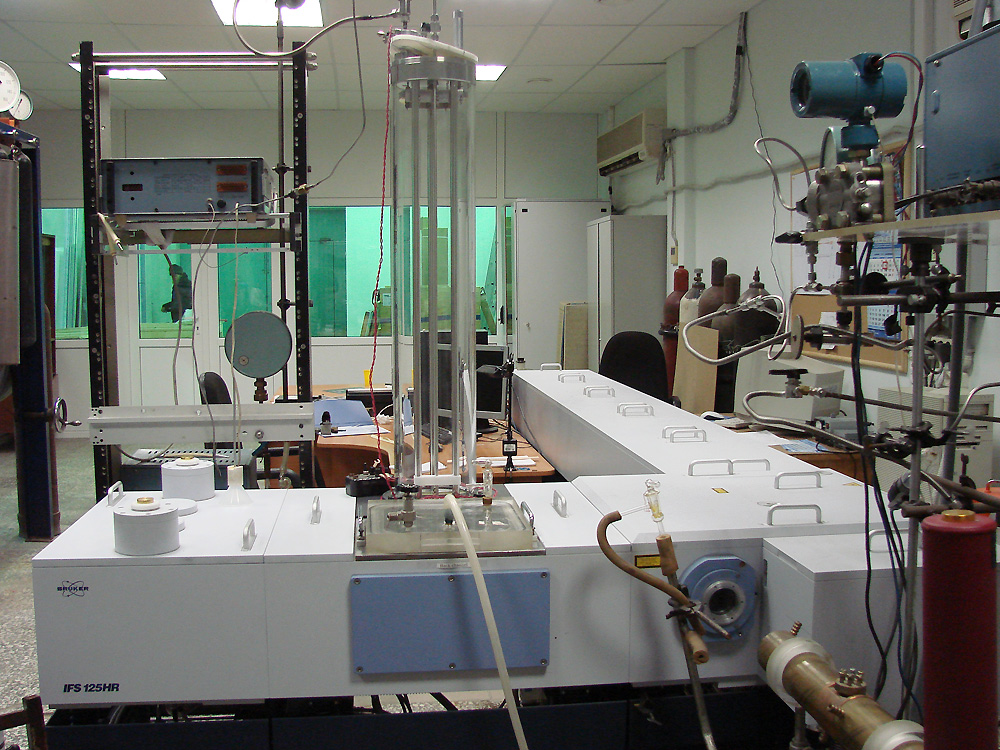
Infrared Fourier spectrometer Bruker IFS 125 HR is designed to measure optical spectra of gas transmission, fluid kriorastvorov the far, middle and near-IR c resolution of up to 0.002 cm-1. The basis of the Fourier spectrometer is a double-beam interferometer, wherein moving one of the mirrors is changed interferometric path difference between the interfering beams. To reduce the effect of external influences interferometer is constructed according to the scheme of the Michelson mirrors as reflectors. Registered luminous flux at the output of the interferometer as a function of the path difference (interferogram) is the Fourier transform of the detected optical spectrum. The spectrum itself (in wavenumber scale) is obtained after performing specific mathematical calculation (inverse Fourier transform) on the interferogram.
Features of the device
The device is powered by two sources: globar and lamp with volframofoy thread. It is possible to use an external light source.
The kit includes two beam splitter: KBr (declared bandwidth of 4 800 – 450 cm-1) and CaF2 (14.000 – 1850 cm-1).
The device is equipped with two receivers, cooled with liquid nitrogen: MCT (10 000 – 600 cm-1) and InSb (10.000 – 1850 cm-1). You can connect up to four external receivers simultaneously.
The device is equipped with equipment that allows for the parallel beams of the spectrometer.
Spectral range – 11 000 – 400 cm-1.
Spectral resolution – to 0.002 cm-1.
The reproducibility of the wave number – no more than 0.0000001.
Absolute photometric error – no more than 0.1%.



